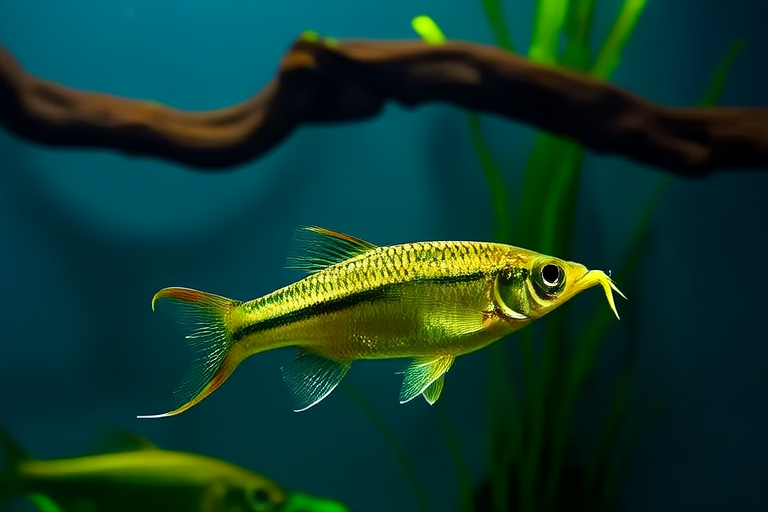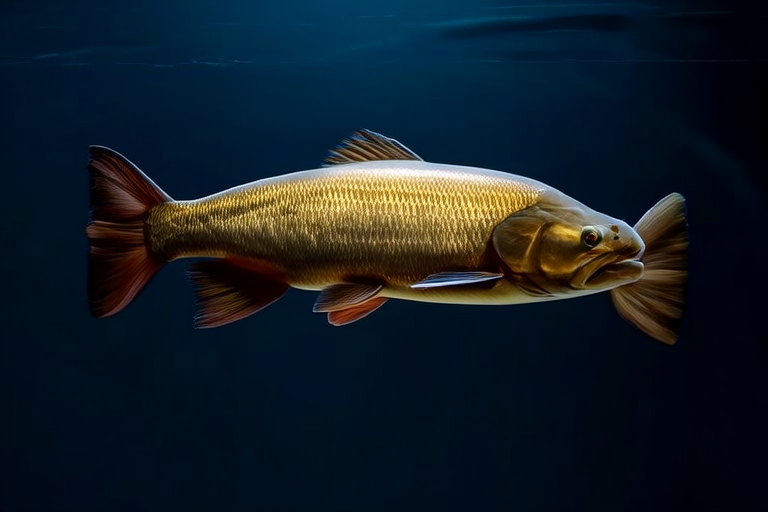
Top 10 Myths Surrounding the Arowana Debunked
The Arowana, often referred to as the “Dragon of the Water,” is a highly sought-after freshwater fish known for its striking appearance and unique behavior. However, there are many misconceptions surrounding this species that can lead to misunderstandings among both novice and experienced aquarists. This article aims to dispel these myths by presenting accurate, detailed information based on scientific facts, expert opinions, and reliable evidence.
Myth 1: Arowanas Can Predict Earthquakes
One of the most enduring myths about Arowanas is their supposed ability to predict earthquakes. This belief stems from anecdotal reports where owners noticed unusual behavior in their fish just before seismic events. However, there is no scientific evidence supporting this claim. Behavioral changes in pets, including fish, can be attributed to various factors such as environmental stress, changes in water parameters, or even human influence. While it’s fascinating to imagine that our aquatic companions could possess such abilities, it remains unproven.
Myth 2: Arowanas Are Aggressive and Dangerous to Humans
Arowanas have a reputation for being aggressive, which has led some people to believe they might pose a threat to humans. In reality, while Arowanas are powerful swimmers capable of leaping out of the water to catch prey, they are generally not aggressive towards humans. Their behavior is primarily defensive, and they are more likely to retreat when faced with potential threats. It’s important for owners to provide adequate space and hiding spots within the aquarium to reduce stress and promote natural behavior.
Myth 3: Arowanas Only Eat Live Food
Another misconception about Arowanas is that they exclusively consume live food. While it’s true that many hobbyists prefer feeding them live prey like feeder fish or insects, Arowanas are adaptable and can thrive on a diet consisting of high-quality pellets and frozen foods. Providing a varied diet ensures better health and reduces the risk of overfeeding live prey, which can introduce parasites or disease into the tank. Additionally, using frozen foods allows for easier storage and reduces the need to maintain live cultures.
Myth 4: Arowanas Must Be Kept in Pairs
There is a widespread belief that Arowanas should be kept in pairs to prevent loneliness or aggression. However, this is not necessarily true. Arowanas are solitary creatures by nature and do not require companionship from other fish. In fact, keeping multiple Arowanas together can lead to territorial disputes and stress. The best practice is to house each Arowana in a large, well-maintained aquarium with plenty of hiding places and open swimming spaces.
Myth 5: Arowanas Are Easy to Breed in Captivity
Breeding Arowanas is considered one of the most challenging aspects of keeping these fish. Despite efforts by hobbyists and professionals alike, successful breeding in captivity remains rare. Arowanas exhibit complex mating behaviors and specific environmental requirements that are difficult to replicate outside their natural habitat. Moreover, ensuring optimal water conditions, diet, and breeding environment requires significant expertise and resources. For most aquarists, focusing on providing a healthy and enriching environment for their single Arowana is more realistic than attempting to breed them.
Myth 6: Arowanas Can Live in Any Size Tank
Due to their size and strength, Arowanas require spacious living environments. Contrary to popular belief, they cannot thrive in small tanks. As they grow, so does their need for ample swimming room and proper filtration systems. Experts recommend starting with at least a 200-gallon tank for young specimens and gradually upgrading to larger setups as they mature. Ensuring adequate space not only promotes physical health but also prevents behavioral issues stemming from overcrowding.
Myth 7: Arowanas Require Saltwater for Optimal Health
Some aquarists mistakenly assume that adding salt to an Arowana’s freshwater environment will improve its health. While small amounts of salt may help combat certain parasitic infections, excessive salinity can cause osmoregulatory problems for these sensitive fish. Instead of relying on salt treatments, maintaining pristine water quality through regular water changes, efficient filtration, and monitoring key parameters like pH, temperature, and ammonia levels is crucial for sustaining optimal health.
Myth 8: Arowanas Are Suitable for Beginner Aquarists
Given their popularity and striking appearance, some beginners might consider acquiring an Arowana. However, due to their specific care needs and high maintenance requirements, Arowanas are better suited for experienced hobbyists who understand advanced husbandry techniques. Beginners should focus on mastering basic skills and gradually move toward more demanding species once they feel confident handling the challenges associated with caring for an Arowana.
Myth 9: Arowanas Cannot Jump Out of Tanks
It’s a common mistake to underestimate the jumping capabilities of Arowanas. These fish are renowned for their ability to leap impressive distances both horizontally and vertically. Owners must ensure that their tanks are securely covered to prevent accidental escapes. Additionally, providing ample surface area for jumping and incorporating floating plants can satisfy this natural behavior without compromising safety.
Myth 10: Arowanas Have No Predators
Despite their formidable appearance, Arowanas are not invulnerable in the wild. They face threats from larger predators such as crocodiles, snakes, and birds of prey. In captivity, while direct predation isn’t an issue, improper care practices can mimic predator attacks by causing stress-related injuries or illness. Proper nutrition, regular health checks, and creating a calm environment are essential steps towards safeguarding your Arowana against indirect harm.
Practical Advice for Potential Owners
For those considering adding an Arowana to their collection, here are some practical tips:
- Research thoroughly: Before purchasing, gather extensive knowledge about Arowana care, including dietary needs, tank setup, and common health issues.
- Invest in quality equipment: High-quality filters, heaters, and test kits are necessary investments for maintaining a healthy environment.
- Provide appropriate housing: Start with a suitable-sized tank and plan for future expansions as your Arowana grows.
- Monitor water conditions: Regularly check pH, temperature, and other vital parameters to ensure stable conditions.
- Consult experts: Reach out to experienced aquarists or join online communities for guidance and support.
Owning an Arowana can be a rewarding experience for those willing to commit to its specialized care requirements. By understanding and addressing common myths, new and seasoned aquarists alike can enjoy the beauty and uniqueness of these magnificent creatures.






